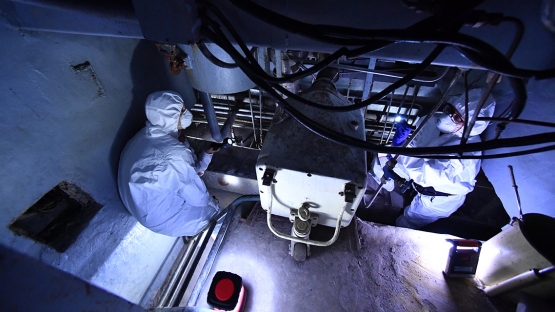Harnessing technological advances to help prevent the spread of nuclear weapons was among the topics of a virtual event, titled The Tenth Treaty on the Non-Proliferation of Nuclear Weapons (NPT) Review Conference: The IAEA Safeguards in the 21st Century, featuring several high-level speakers yesterday, jointly organized by the IAEA and the United Nations Office for Disarmament Affairs (UNODA). This was the second event co-organized by UNODA and the IAEA in the lead up to the Tenth Review Conference of the Parties of the Treaty on the Nonproliferation of Nuclear Weapons (NPT), which is tentatively scheduled to take place in January 2021.
As a result of the increasing amount of nuclear material and facilities worldwide, the demand for IAEA safeguards – a series of technical measures undertaken to provide the international community with confidence that nuclear material is used only for peaceful purposes – continues to grow. At the event, Agency representatives, diplomats and non-governmental representatives explored the challenges and opportunities that the safeguards system faces in the 21st century.
“We are investing in technologies and tools, processes and our people, to allow us to keep delivering on our mission into the 21st century,” said Massimo Aparo, IAEA Deputy Director General and Head of the Department of Safeguards. “In this time of challenges, we need to identify further opportunities and make smart investments to enable the Agency to continue to perform its critical safeguards objectives.”
“Since the NPT´s entry into force fifty years ago, safeguards have been the glue that has held the Treaty together,” said Ambassador Gustavo Zlauvinen, President-designate of the Tenth NPT Review Conference. “My role as president-designate of the Tenth NPT Review Conference is to facilitate a balanced outcome that strengthens implementation of the Treaty across all three of its pillars: disarmament, non-proliferation and the peaceful uses of nuclear energy. Acknowledging the success of - and States Parties’ enduring commitment to - safeguards, and vigilance in their implementation, will be fundamental to such an outcome.”
Topics covered in the session also included the impact of COVID-19 on safeguards implementation and the role of the NPT in ensuring the sustainability of the safeguards system in the longer term. IAEA safeguards act as the verification mechanism in assessing States’ compliance with their non-proliferation obligations under the NPT.
“Safeguards are integral to the functioning and implementation of the NPT,” said Izumi Nakamitsu, United Nations Under-Secretary-General and High Representative for Disarmament Affairs. “The safeguards system, stewarded by the IAEA, is the backbone of the Treaty, allowing it to fulfil its function as the cornerstone of the non-proliferation regime.”



